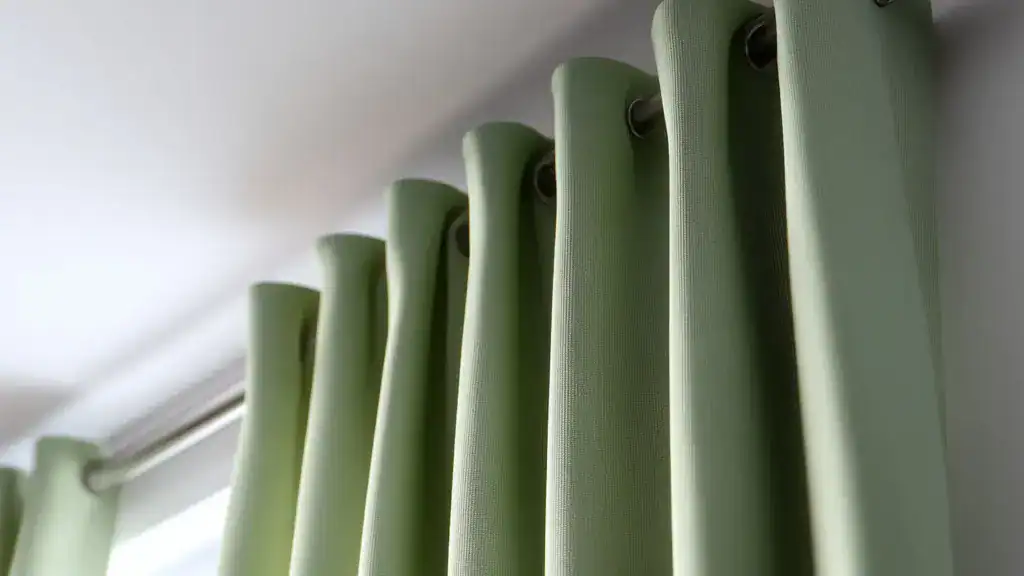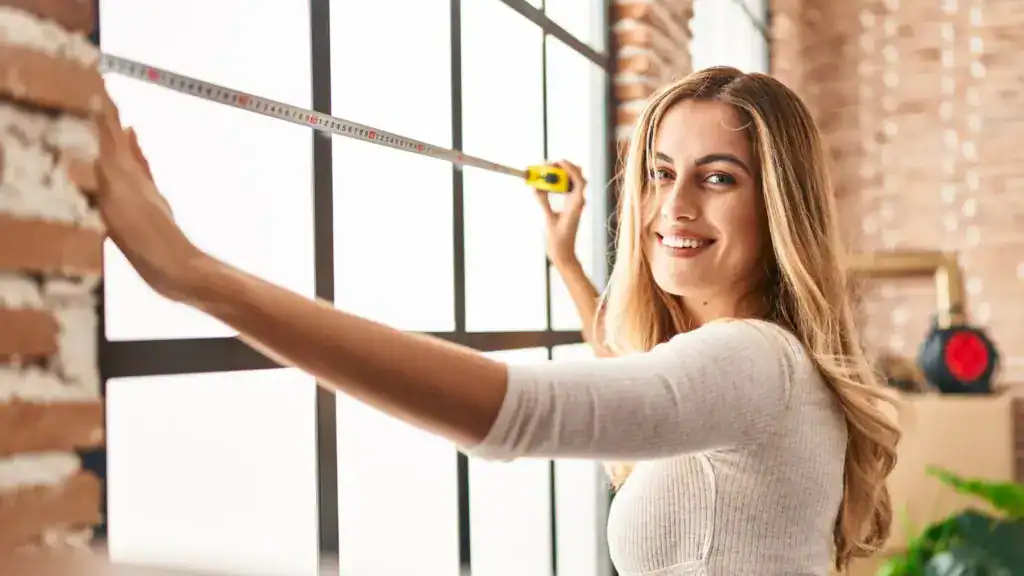Measuring for Curtains for a Perfect Fit

Are you ready to give your windows a stylish makeover with curtains that fit like a glove?
It starts with accurate measurements. But measurements of what, exactly, and from where to where? An inch or two short, and you’ve got the window treatment equivalent of flood pants. It’s too long, and you have bunched-up curtains that your window will have to grow into, like hand-me-down jeans.
In this guide for DIYers, we’ll take you through the steps of measuring for curtains like a pro.
What You’ll Need
Have the following items handy:
- A measuring tape, ruler, or digital measuring tool
- Pen and paper to write down measurements
- Step stool or ladder (if your windows are out of reach)
- Calculator (optional for calculating fabric yardage)
- Coffee (optional, but highly recommended for DIY ambiance)
Now, let’s roll up those sleeves and get to work!
Step 1: Measure the Width
Inside Mount
- Grab your measuring tape and find the inside edge of your window frame on one side.
- Extend your tape to the inside edge on the opposite side.
- Write down that measurement. That’s the width of your window!
Note: Measure the top, middle, and bottom of your window. Use the narrowest measurement, if they differ, so that the curtains fit.
Outside Mount
- Measure the width of the window, including the frame.
- Extend your measurement on either side if you want your window to appear larger or provide more coverage when the curtains are drawn.
- Adding 4-6 inches on both sides is a good rule of thumb.
Step 2: Measure the Length
You’ll want your curtains to hit the Goldilocks sweet spot: not too short or long.
- Sill Length: Measure from the top of the window frame to the sill for curtains that just touch the windowsill.
- Apron Length: Let your curtains flow to the apron or windowsill for a more dramatic look. Measure from the top of the frame to your desired length.
- Floor Length: Want that classic, regal look? Measure from the top of the frame to the floor. Pro tip: add a couple extra inches to ensure your curtains pool gracefully.
Step 3: Consider Curtain Style
Different curtain styles demand different measurements. Let’s break it down:
- Rod-Pocket Curtains: Add 1.5 to 2 times the rod width to your width measurement. This gives your curtains a lovely gathered look when closed.
- Tab-Top or Ring-Top Curtains: Measure from the top of the curtain rod to your desired length. No need to add extra width.
- Grommet-Top Curtains: Measure from the top of the curtain rod to your desired length. Again, there’s no need to add extra width.
- Pleated Curtains: Pleats will reduce the width of the curtain. Measure 2 times the length of your curtain rod. For example, if you want 50 inches of fabric coverage, you’ll need to buy 100 inches worth of material.
- Eyelet Curtains: With metal rings sewn into the top edge, these curtains need an accurate measurement from the top of the rod to your desired length. Expect a streamlined, modern wave effect when the curtains are drawn.
- Cafe Curtains: These cover only the bottom half of a window. Measure from the midpoint of the window to your desired length. Because these curtains are typically used in kitchens and bathrooms, consider the positioning of any appliances or fixtures.
Conclusion: Curtain Call
Congratulations, you’ve successfully navigated the wonderful world of window measurements! With your newfound knowledge, you’re ready to dress those windows with curtains that feel like a dream.
Measure twice, cut once, and let your curtains steal the show!
And if you’re ready to move beyond the somewhat scary realm of DIY, call us at Aero Shade for custom curtains guaranteed to fit. We can alter curtains in our local factory or make them from scratch.
All estimates are free, and we’ll never pressure you into a purchase you don’t want. Stop by for a visit, or call us to come to you. We’re located in Los Angeles, just a few clicks from Beverly Hills.
FAQs: Unraveling Curtain Mysteries
Q: Can I use the same measurements for all types of curtains?
Nope! Each curtain style has its own measuring rules. Follow the guidelines for each for a flawless fit.
Q: What if my windows are different sizes?
Measure each window separately. Don’t assume they’re all identical — windows have personalities, too!
Q: How high should I hang my curtains?
For an illusion of height, mount your curtains a few inches above the window frame. This simple trick adds instant grandeur!
Q: Help! I measured, but my curtains still look wonky. What did I do wrong?
Recheck your measurements. Also, seek the advice of a curtain-savvy friend for a second opinion, or call us at Aero Shade.
Q: What’s the best method to ensure my measurements are accurate?
Always use a metal measuring tape instead of plastic or fabric, since they can stretch and give inaccurate results. Measure at least twice to confirm your readings.
Q: What factors should I consider when deciding the width of my curtains?
For a gathered look, the curtain width should be 1.5 to 2 times the window’s width. Also, consider the curtain style because some styles, like pleated curtains, naturally take up more width.
Q: How do I measure for curtain rods?
The curtain rod should extend beyond the window frame. Allow an extra 4-6 inches on each side of the window.
Q: How do I decide between inside and outside mount?
Inside mounts give a clean, built-in look, while outside mounts can make a window appear larger and hide an unattractive window. Your choice depends on the aesthetic you prefer and the style of your window and room.
Q: Where should the curtain hem fall?
The curtain hem can touch the windowsill, hang below the sill, or fall to the floor, depending on your preferred style. For a traditional look, let the curtain slightly puddle on the floor.
Q: How do I ensure my curtain installation is level?
Use a level or app to ensure your curtain rods are straight. An unlevel rod will make the curtains appear uneven.
Q: Can I install the curtain rod and curtains myself?
With the right tools and careful measurements, you can install your curtains DIY. But if you’re not comfortable doing it yourself, hire a professional.
Q: Should all my curtains match?
Not necessarily. While some people opt for a uniform look, others prefer different styles in different rooms. It’s all about personal preference and what works best for your space.
Q: How do I choose the right curtain color?
Keep your room’s color scheme in mind. If your room has bold colors, neutral curtains can balance it out. For a room with a neutral palette, curtains in a striking color or pattern can create visual interest.
Q: What’s the difference between curtains and drapes?
Generally, drapes are lined, often floor-length, and made from a heavier fabric, while curtains are unlined, can be any length, and are made from lighter materials.
Q: How often should I replace my curtains?
There’s no hard and fast rule, but curtains typically last 7-10 years with good care. It might be time for a change if your curtains are faded, torn, or outdated.


